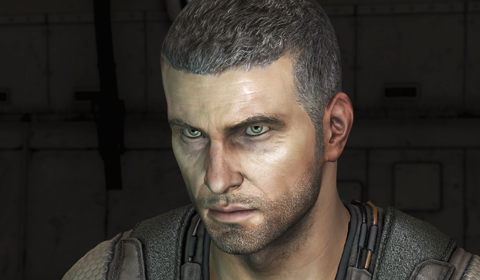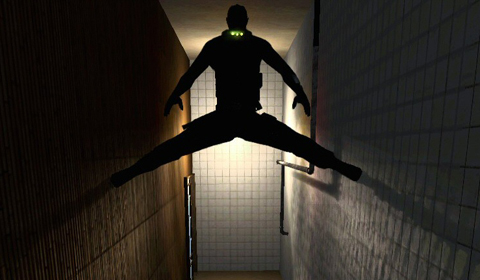Chaos Theory isn't just one of my favourite Splinter Cell games, it's one of my favourite games of all time. The fact that I'm opening this post on Blacklist with praise for one of its predecessors should already be an indication that I'm not a big fan of this particular entry. Granted, Blacklist does do a lot of good things, especially in its gameplay approach. The game was touted by Ubisoft as being "a consolidation of all the best ideas from the series" and that rings true. Conviction went on a more action-oriented streak and stripped Sam Fisher of his ability to deal with his enemies non-lethally. Blacklist reintroduces non-lethal takedowns and layers the gameplay mechanics from Conviction into it, with the cover system and Mark & Execute on top. That makes Blacklist the most comprehensive Splinter Cell to date, but its storyline and characters are lacking in comparison.
The first three Splinter Cell games had some of the best storylines in the franchise, largely because they featured engaging characters and believable political scenarios. I enjoyed going after Kombayn Nikoladze and Suhadi Sadono. The East Asian Crisis of Chaos Theory and Sam Fisher's way of gradually coming to terms with the villainy of his old war buddy Douglas Shetland were real highlights of that game. Blacklist instead focuses on a singular and generic terrorist threat against America that shows little subtlety and nuance. The same goes for Sam Fisher.

I'm starting to think that a lot of Sam's appeal as a protagonist came from Michael Ironside's voice performance, largely because he provided more than just that. He recently stated in a Reddit AMA that he worked alongside Ubisoft to give Sam more humanity and empathy, since the character was first pitched as "a two-dimensional killing machine" and Ironside didn't take to that. In Blacklist, Sam actually comes across as the killing machine envisioned in that early pitch. His takedowns are clinical and almost casual; he doesn't even look at his targets as he plunges his knife into them. He shows little signs of empathy and has entirely lost his morbid sense of humour, which had peaked with the incredibly humorous interrogations in Chaos Theory.
Another change for the worse is the new approach to Sam's movements, which Ubisoft has dubbed "a fluidity of motion." Sam now effortlessly scales buildings and can take down several enemies at once with an unbroken flow. While this is a gameplay evolution for the better, it ignores Sam's evolution as a character. The man was already 47 years old in the first Splinter Cell and the game played with that wonderfully. He'd give off a weary grunt when pulling himself up to a ledge and would start panting after an extended sprint. The first game can appear clunky and slow, but that actually helps in portraying Sam as someone who is just tired and grants him more of the aforementioned humanity.
When it was first announced that Ironside would be replaced with a younger actor to better accommodate the integrated motion capture process, I came up with another story angle that would believably deal with Sam's advanced age rather than ignore it altogether. What if Sam takes on the role of Irving Lambert to a new player character? Imagine infiltrating enemy compounds with Ironside's sardonic tones in your ear. This would also eliminate the problem of the leader of Fourth Echelon being the one who constantly risks his own life on the ground. I appreciate that Sam is an iconic player character and that fans might not so readily accept a new one, but this seems like a better way to keep him in the game while staying true to the character's evolution.
From a gameplay perspective, the new Sam Fisher can to an extent be moulded into a more empathetic character by virtue of the non-lethal takedowns. On the other hand, a player's drive to limit casualties is compromised by a couple of sections where large-scale lethality is the only option. Those present another unfortunate change to the Splinter Cell formula and its approach to variety, which it used to handle so cleverly.
For example: the first Splinter Cell introduces a courtyard where Sam must avoid several spotlights. To complicate matters, the area is also littered with mines, which can only be detected by thermal goggles. However, thermal washes out the spotlights, so Sam must alternate between two mutually exclusive views to work his way through. Pandora Tomorrow featured a section with an enemy overlooking a courtyard using night-vision goggles. This meant Sam had to avoid detection by staying in the spotlights he would otherwise steer clear of. In Chaos Theory, he enters an engine room on a ship and is told that a gas leak presents a serious fire hazard; even a single gunshot will blow up the room. Not only must Sam refrain from using his weapons, he also has to ensure that the enemies present in the room can't get a shot off either.
These instances of variety play within the parameters of the established gameplay mechanics and force Sam to rethink, if not invert his usual tactics. Blacklist attempts to introduce variety by changing up the gameplay altogether, like rail shooting sections involving drones and Briggs briefly being controlled from a first-person perspective. They come across as jarring and needlessly detract from the established gameplay foundation, which is very solid. These sections and the jingoistic storyline actually make Blacklist feel more like Call of Duty.


Add new comment